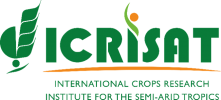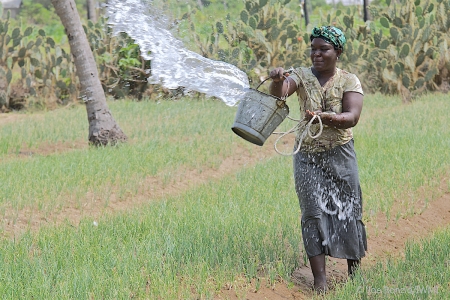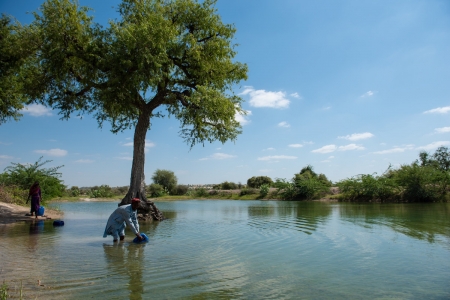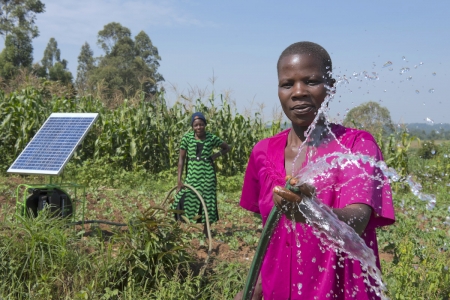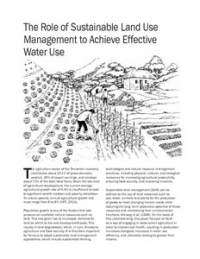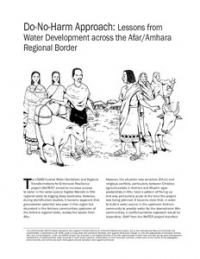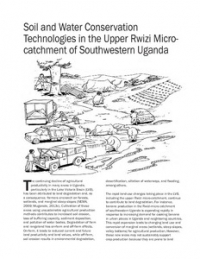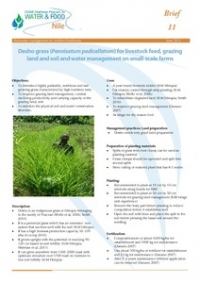With increasing population and associated demand for food and feed in sub Saharan Africa there is an increasing competition for land and water among different users and uses. Climate change is likely to intensify the current challenges of low productivity, water scarcity and competition within and between communities and nations, linked by hydrological flows across watersheds and basins. The poor and vulnerable populations are bound to face the greatest risk. NGOs and Government institution in most sub Saharan Africa have invested substantial amount of resources to reduce negative effects of erosion and improve water management. For instance, in the Ethiopian highlands more than 10 million ha of land has been put under conservation and management in the last decade. However, there is limited and comprehensive study to quantify the on-site and off-site effects of these investments on production and livelihoods of the rural communities. Although efforts have been made to combine in-situ conservation with water harvesting technologies with storage components to enable supplemental irrigation to mitigate the effects of long dry spells on crop production, the economic viability of such systems implemented by smallholder farmers has not been critically evaluated. Also missing is the information on climate-induced risk and rates of return profiles of various agricultural water management technologies, climatic conditions to which the technologies are best suited and appropriate scale for interventions. Despite the benefits associated with most of these technologies, their adoption by smallholder farmers has remained very low and the underlying reasons, though well known, have not been properly addressed. There are also very limited comprehensive studies globally on coupling farm level modeling to a watershed scale under various socio-economic arrangements through defined hydrological processing. The novelty of the current proposal lies in the potential to conduct the study across different agro-ecological conditions in the two major river basins in Africa, and developing a conceptual model (algorithm) to link farm level model outputs with watershed scale outputs and study downstream impacts of in-field water conservation practices. Therefore the objectives/activities of the research are: 1. To quantify climate-related risk on on-farm crop productivity and assess the impact of in-field soil and water conservation practices (contours, terraces, exclosures, soil bunds, revegetation of hillsides) on on-farm productivity and at various landscape positions. 2. To quantify the effect of upstream in-field soil and water conservation practices (contours, terraces, exclosures, soil bunds, revegetation of hillsides) on downstream water access and irrigation under various socio-economic arrangements. 3. To develop a scaling-up methodology by coupling social analysis of target groups, targeted farm level modeling with watershed level modeling in the various basins and socio-economic conditions. 4. To make available information on quantifying the effects of improved catchment management to local institutions/policy makers for leading to better institutional arrangements in managing landscapes. Scientists from ICRISAT, local universities and research institutes will be part of the program. In addition graduate students (at least 4 MSc and 1 PhD students) will be part of the research team and contribute to the project through data collection, analyses, model calibration and validation the report they generate would help them to get their degrees as well. The research staff in the current proposal would help graduate students to write scientific papers as well. Uptake: The current project will ensure participatory processes whereby various social groups and institutions are participating in testing and scaling-out the technologies and practices to other communities in the neighboring watershed and beyond. Regular consultation with different groups of men, women and the youth and local farmers’ organization will help to prioritize implementation strategies at farm and watershed level. The involvement of local NGOs is critical to take these interventions to scale. For example in southern Mali a local NGO named AMEDD will be leading the Research for Development (R4D) platform and serve as a Bridger or broker among research organizations and farmers. AMEDD has been helping local communities in terms of getting appropriate improved technologies on land/water, crop varieties and other useful agricultural inputs.
menu

